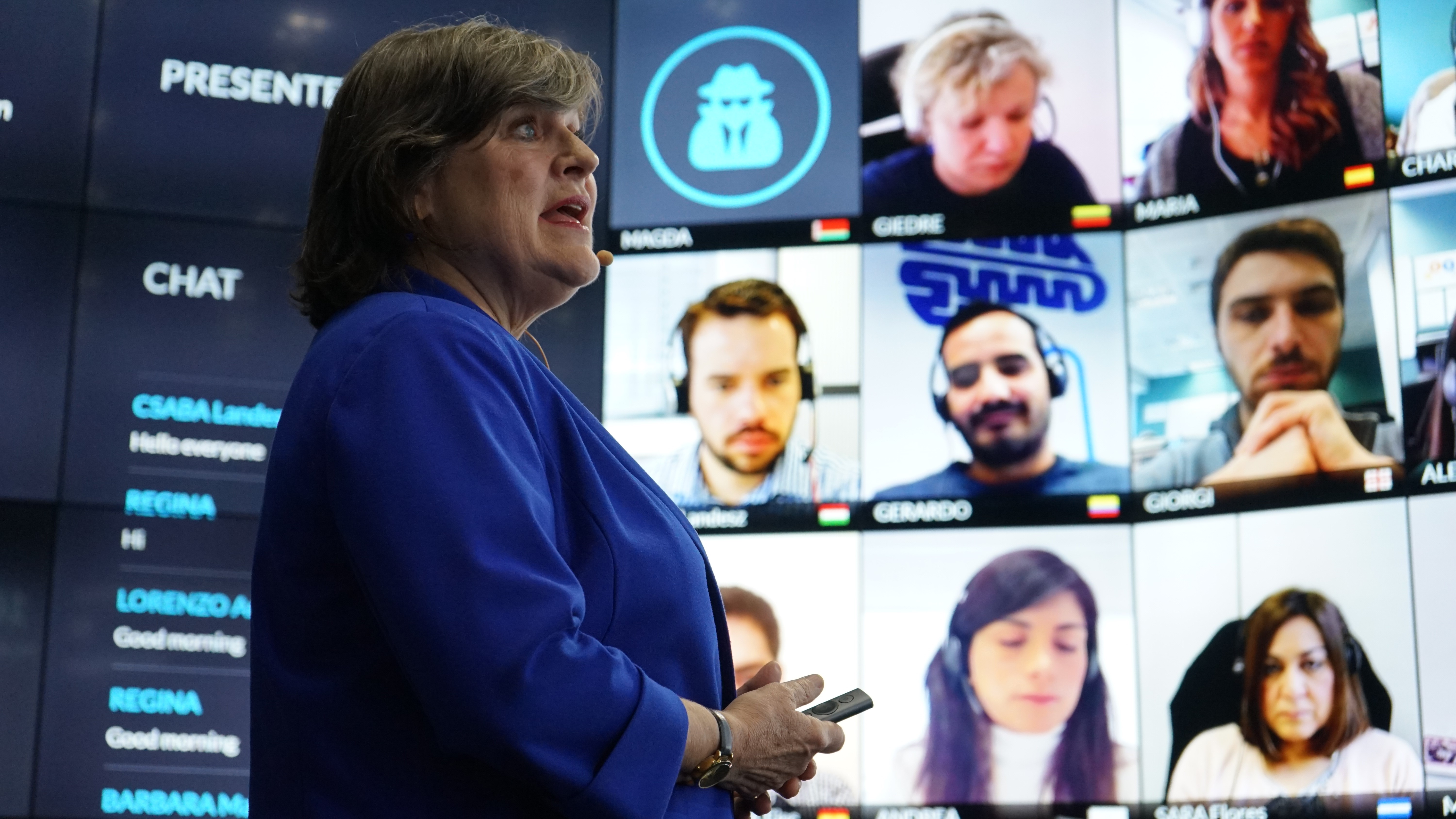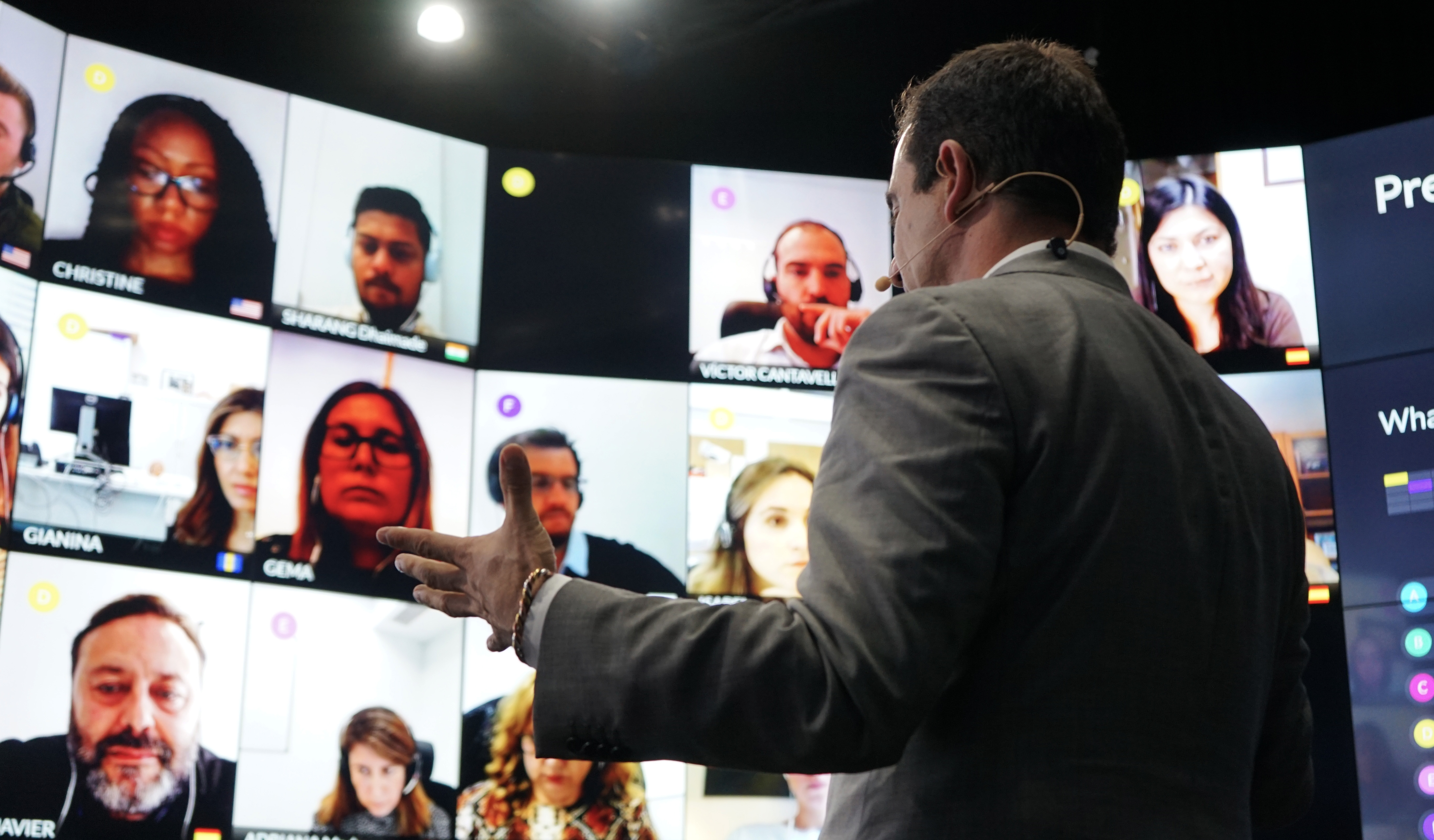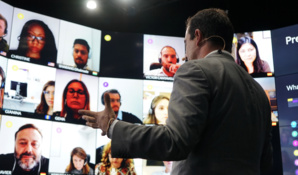Education providers are scrambling to produce solutions to keep their courses and students on track, leveraging technology wherever possible. Just as workforces have been making increasing use of video conferencing services, classrooms are moving toward a digital format as well, with educators having to use online conferencing methodologies to lectures and group interaction.
For some, this is a frightening and difficult undertaking, one they are not well-equipped to deal with. For others, the unsuitability of certain subjects to digital teaching means that they have had to cut modules or activities from courses altogether: teaching mathematics through video conference is one thing, chemistry experiments are another altogether.
Despite the Spanish government’s announcement of a lockdown on the 14th March, a stay at home order similar to those seen in other countries – education at IE University continues.
IE University is an international academic institution located in Madrid and Segovia, with 7,000 students from 140 countries who are now following their programs 100% online. Dr. Gonzalo Garland, Vice President of External Relations at IE University, has said that the university is committed to protecting the health of students and staff, to communicating with transparency about the evolution of the situation, and to maintaining academic activity at a high standard: “Our commitment is to protect the health of our community. We are an international institution, with students and teachers from 140 countries. We were a pioneer in Europe 20 years ago with the launch of our online training programs.”
As such, it is no surprise that IE University has an edge in experience over the competition, recognized as it is as one of the top two online education providers in the world.
For some, this is a frightening and difficult undertaking, one they are not well-equipped to deal with. For others, the unsuitability of certain subjects to digital teaching means that they have had to cut modules or activities from courses altogether: teaching mathematics through video conference is one thing, chemistry experiments are another altogether.
Despite the Spanish government’s announcement of a lockdown on the 14th March, a stay at home order similar to those seen in other countries – education at IE University continues.
IE University is an international academic institution located in Madrid and Segovia, with 7,000 students from 140 countries who are now following their programs 100% online. Dr. Gonzalo Garland, Vice President of External Relations at IE University, has said that the university is committed to protecting the health of students and staff, to communicating with transparency about the evolution of the situation, and to maintaining academic activity at a high standard: “Our commitment is to protect the health of our community. We are an international institution, with students and teachers from 140 countries. We were a pioneer in Europe 20 years ago with the launch of our online training programs.”
As such, it is no surprise that IE University has an edge in experience over the competition, recognized as it is as one of the top two online education providers in the world.
Building resilience
IE University recently launched the Building Resilience online training hub, providing open-access virtual courses, conferences, videos and articles from experts covering the coronavirus pandemic and how it can be overcome through innovation. The available resources span business, technology, health, economics, humanities, and geopolitics.
The university said that it aims to contribute further to the sharing of valuable knowledge at a time of exceptional challenges to traditional forms of education. The Building Resilience webpage also has details on the entrepreneurial projects of IE University students, graduates, and professors working toward tackling aspects of the COVID-19 pandemic, and includes the planned dates for a line-up of virtual conferences.
The university said that it aims to contribute further to the sharing of valuable knowledge at a time of exceptional challenges to traditional forms of education. The Building Resilience webpage also has details on the entrepreneurial projects of IE University students, graduates, and professors working toward tackling aspects of the COVID-19 pandemic, and includes the planned dates for a line-up of virtual conferences.
An opportunity to grow
While businesses and institutions must adapt themselves to the present scenario, they should also be aware that these innovations will not all be temporary. As Dr. Enrique Dans, who teaches innovation at IE University, recently wrote : “The first priority, of course, will be to continue to provide quality education that is as interactive and participatory as possible and that gives our students the best learning experience.”
There are real benefits to digital education, when it is tackled the right way. In his work, Dr. Dans has noticed that it is often a superior medium, outshining face-to-face classes in terms of student engagement. He sees this particularly in asynchronous online environments, in which students can respond to questions in their own time, reflect, and source links and resources in support of their responses. This stands in contrast to the normal format in which students meet together and respond in real-time to the questions presented by a teacher or moderator.
As Dr. Dans has noted, the post-COVID 19 crisis will change education forever. “Our students will enhance their digital skills, a key to the world in which we now all work and live. IE University is a blended, hybrid institution, and the world is likewise hybrid. It is essential to develop this digital literacy to navigate between face-to-face and online environments; and from this point forward, these skills will be a strength for IE University students and alumni.”
After lockdown is over, the most effective of the adjustments we have had to make will be here to stay.
Students may continue to expect options for remote learning when it suits them, just as workers will have expectations about greater freedoms in deciding where and when they complete their work. Businesses and educators must be ready to continue with remote and digital solutions even after activity normalizes.
For that reason, now is the time to experiment, to battle-test systems and approaches, and to find the best solutions, so that when freedom of movement returns, students still have the option of effective and satisfying remote alternatives.
While it is a worrying time for governments and health services, for educators the question must move from one of how it is possible, to one of what is possible. Not only should we be asking ourselves what can truly be done with the tools of today, but also, which tools we will need to create in order to support an age of remote organization and asynchronous education.
There are real benefits to digital education, when it is tackled the right way. In his work, Dr. Dans has noticed that it is often a superior medium, outshining face-to-face classes in terms of student engagement. He sees this particularly in asynchronous online environments, in which students can respond to questions in their own time, reflect, and source links and resources in support of their responses. This stands in contrast to the normal format in which students meet together and respond in real-time to the questions presented by a teacher or moderator.
As Dr. Dans has noted, the post-COVID 19 crisis will change education forever. “Our students will enhance their digital skills, a key to the world in which we now all work and live. IE University is a blended, hybrid institution, and the world is likewise hybrid. It is essential to develop this digital literacy to navigate between face-to-face and online environments; and from this point forward, these skills will be a strength for IE University students and alumni.”
After lockdown is over, the most effective of the adjustments we have had to make will be here to stay.
Students may continue to expect options for remote learning when it suits them, just as workers will have expectations about greater freedoms in deciding where and when they complete their work. Businesses and educators must be ready to continue with remote and digital solutions even after activity normalizes.
For that reason, now is the time to experiment, to battle-test systems and approaches, and to find the best solutions, so that when freedom of movement returns, students still have the option of effective and satisfying remote alternatives.
While it is a worrying time for governments and health services, for educators the question must move from one of how it is possible, to one of what is possible. Not only should we be asking ourselves what can truly be done with the tools of today, but also, which tools we will need to create in order to support an age of remote organization and asynchronous education.







